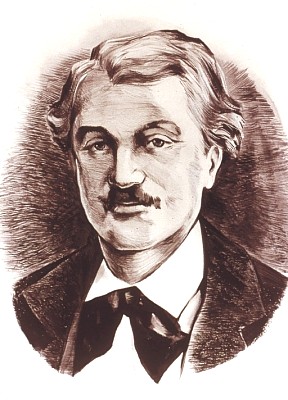Today’s Almanac-July 15, 2010

On July 15, 1869 French chemist Hippolyte Mège-Mouriés received a patent on oleomargarine. To tell you the truth, I selected this as a topic for today’s almanac entry because it’s fun to think that a guy with a name pronounced Hippo Lite made possible the mass marketing of fats. Mège-Mouriés was born in 1817 the son of a school teacher, he studied a career as a chemist and at the age of 21 got a job in the pharmacy of the Hôtel-Dieu hospital in Paris. In addition to his duties as a druggist, he pursued his own independent research and was soon publishing scholarly papers. By the early 1860’s he turned his attention to the study of fat processing which led him to the development of margarine by combining beef tallow with skim milk. Later vegetable fats were substituted and a whipping process for texture was developed. The result was a reasonably palatable, inexpensive alternative to butter, which was often too expensive for the urban poor of the city. The government was more interested in it as a cheap supplement to Navy rations. In fact the government was so pleased that when the smoke cleared from the Franco-Prussian the bodies of the Paris Communards were buried it awarded him a cash prize. Although butter-mad French chefs and bakers might curse his name to eternity, Mège-Mouriés set himself up for life when he sold his patent to the Dutch firm Jurgens then best known for its soaps and lotions. Jurgens ramped up production, finding a ready market for the new product throughout Europe. Jurgens soon found itself in competition with another Dutch manufacturer, Samuel van den Bergh. After duking it out for market share for decades the two companies merged in 1927 to become a virtual European monopoly, Margarine Unie. Three years later in 1930 the continental company merged with Britain’s Lever Brothers to become the world’s first true multinational corporation, Unilever. The company’s American subsidiary continued to be known as Lever Brothers. In America dairy interests fiercely opposed the introduction of margarine. State began enacting restrictions in the 1870s and the first Federal action imposed a stiff two cent a pound tax on margarine plus expensive licensing provisions meant to discourage domestic production. Arguing that yellow colored margarine constituted a fraud on the public dairy states like New York and New Jersey began to ban the use of dyes in the product or-in the case of New Hampshire-required that the product be dyed and unappetizing pink. Ultimately the Supreme Court thought that New Hampshire went a bit too far with that one. But by the turn of the 20th Century only 20% of the American population could buy yellow margarine. Naturally, sales plummeted and dairy interests smiled. World War I caused agricultural commodity shortages the world over, especially of perishable butter. The scarcity of butter caused the relaxation of some Federal and state restrictions. The pendulum swung the other way during the Depression as states scrambled to preserve their threatened agricultural economies. Another war and more shortages caused a resurgence of margarine sales and consumption. But this time the post war environment was not as friendly to butter. Consumers had become used to margarine and-shockingly-many preferred it to creamery butter. More over the introduction of television opened up powerful tools for brand marketing margarines on a national level while butter remained mostly a product of local and regional dairies. The shift in population from the countryside to cities and suburbs weakened agricultural interests clout at the same time the influence of the mega-corporations marketing margarine grew enormously. One by one the state restrictions on colored margarine disappeared. In the end a housewives’ revolt of those tired of having to squeeze tubes of dye into softened sticks of oleo and mashing them together triumphed even in the hold-out dairy states. They wanted their more economical spread. Minnesota lifted its ban in 1963 and hold out Wisconsin finally fell in line in 1967. Today margarine in all of its forms far outsells butter and is the table spread in up to 80% of American households. Dairy interests are now happy that margarine/butter blends have become popular. These products like I Can’t Believe It’s Not Butter blend small amounts of butter or buttermilk with oleo for enhanced flavor. Now the only enemies of the margarine industry insight are the killjoy food police and their war on fats and cholesterol.